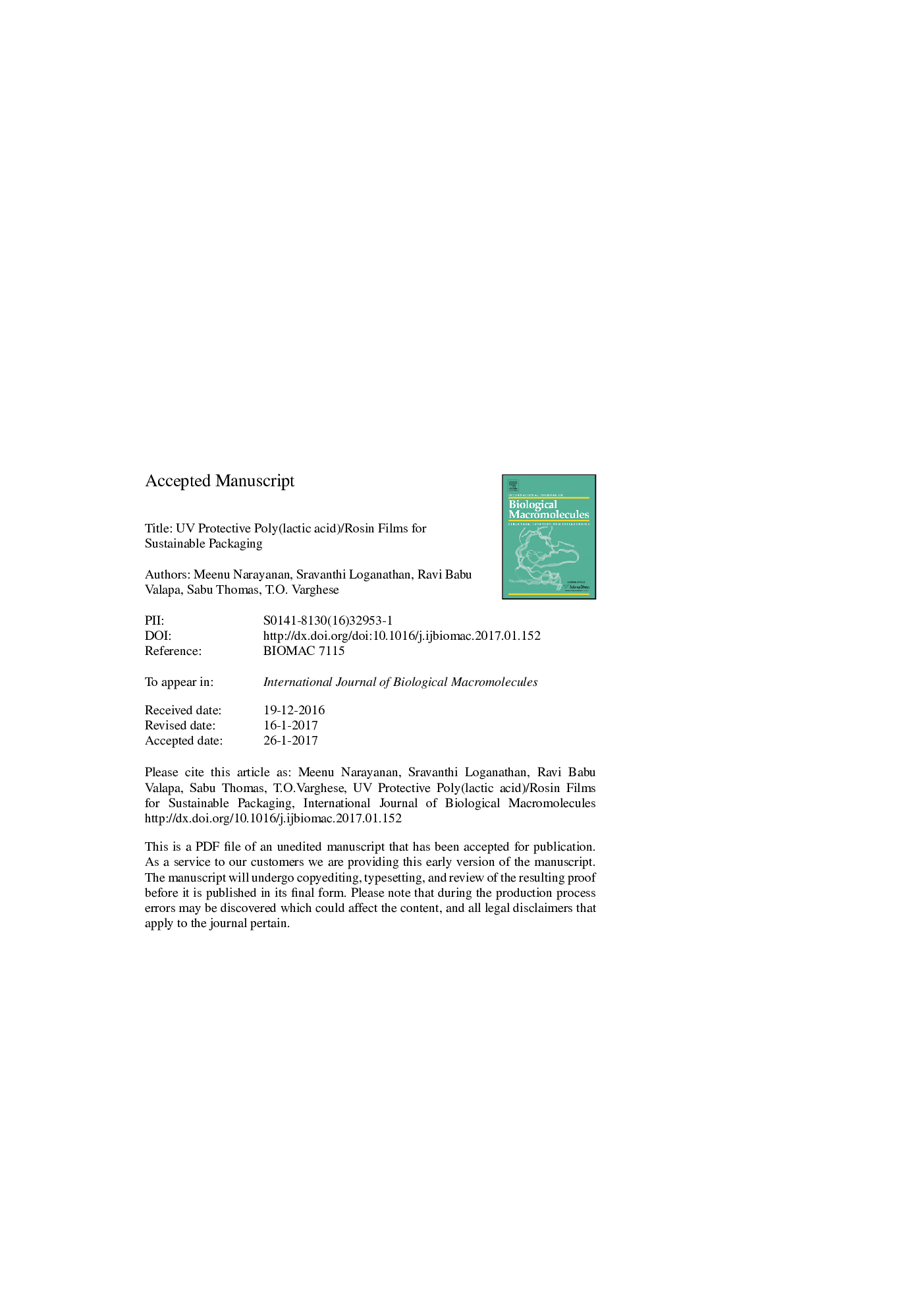| Article ID | Journal | Published Year | Pages | File Type |
|---|---|---|---|---|
| 5512032 | International Journal of Biological Macromolecules | 2017 | 42 Pages |
Abstract
Recently, biopolymer based plastic materials are regarded as potential alternative for conventional plastics of fossil fuel origin in order to compensate depleting petroleum resources and address environmental pollution issues. Poly(lactic acid) (PLA) is one among the biopolymers which is rapidly commercialized for food packaging application. However, the demerits accompanied with PLA like brittle nature, slower crystallization rate, poor gas barrier and high ultraviolet radiation transmission properties confines its commercial application in food packaging sector. Studies on the improvement of ductility, crystallization rate and gas barrier properties are markedly reported. Much emphasis is not given in the literature on improving UV shielding properties which plays important role in preventing oxidation degradation of PLA. Therefore, the current work is focused on fabrication of eco-friendly poly(lactic acid)/rosin (RS) based biocomposite films with improved UV shielding along with ductility and oxygen barrier properties. The PLA-RS biocomposite films containing different loadings (1, 3, 5, 10 and 20 wt%) of RS with an average thickness of 50 μm are fabricated via solution casting technique. The PLA-RS film demonstrated noteworthy light barrier feature by shielding the passage of â¼98%, 92% and 53% in UV-B, UV-A and visible light regime, respectively. In case of UV-C region, complete blockage of UV transmission through the PLA-RS biocomposite film is noticed. In addition to this, the presence of RS in the PLA matrix brought considerable improvement in terms of ductility and oxygen barrier characteristics. This in turn indicates PLA-RS biocomposite films hold significant potential for sustainable food packaging application.
Related Topics
Life Sciences
Biochemistry, Genetics and Molecular Biology
Biochemistry
Authors
Meenu Narayanan, Sravanthi Loganathan, Ravi Babu Valapa, Sabu Thomas, T.O. Varghese,
